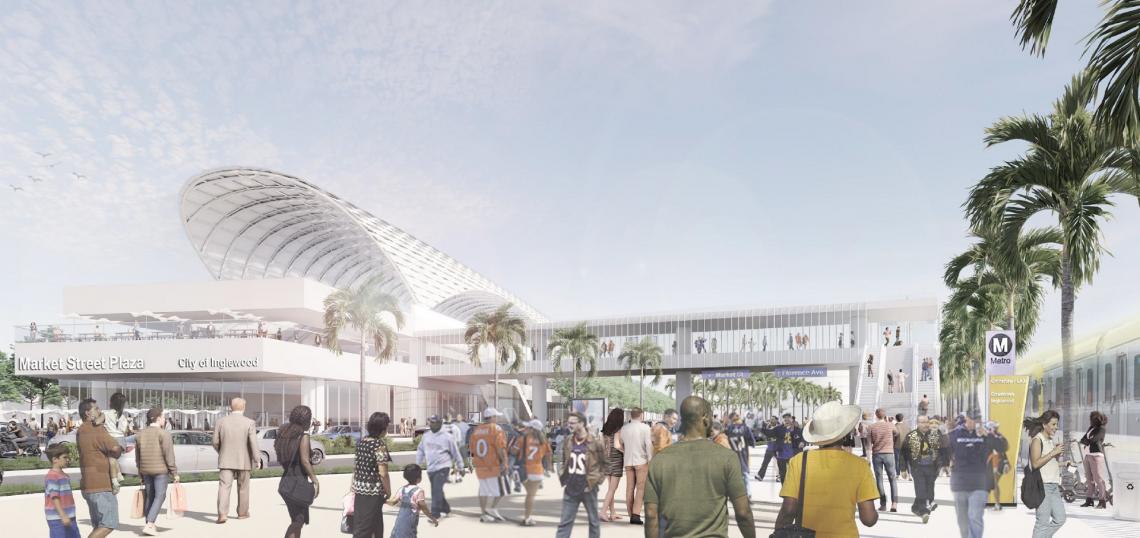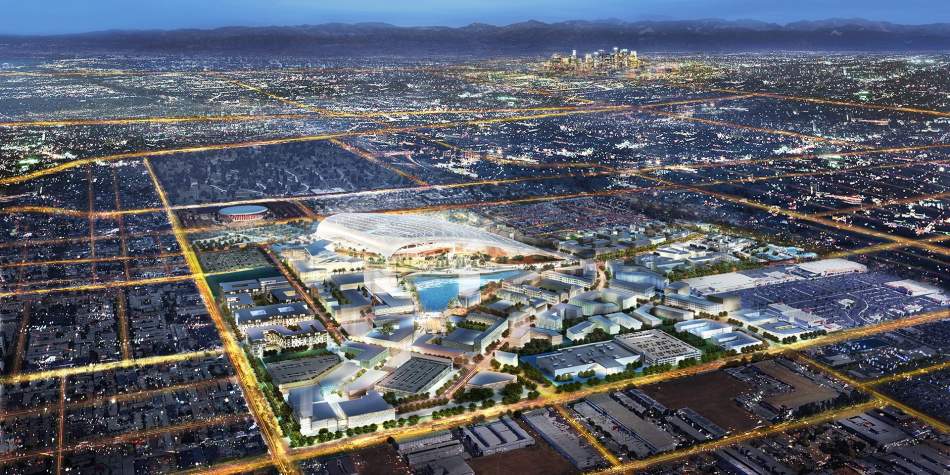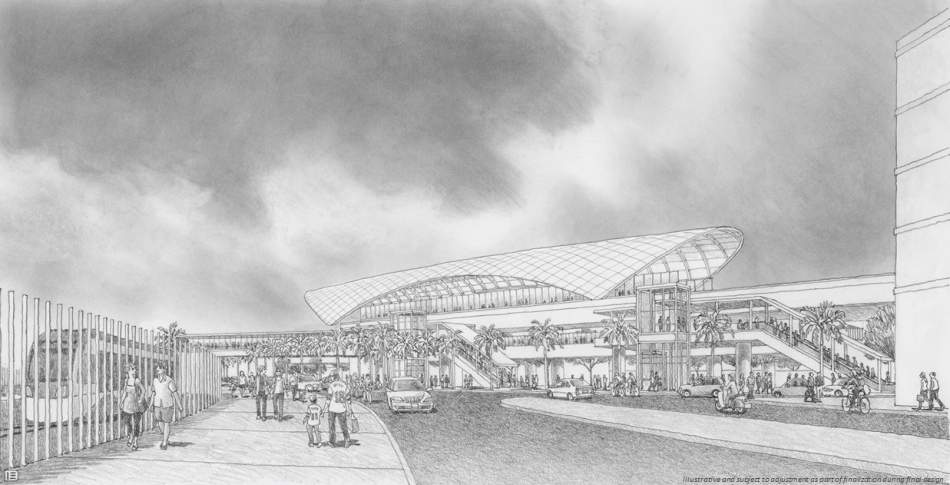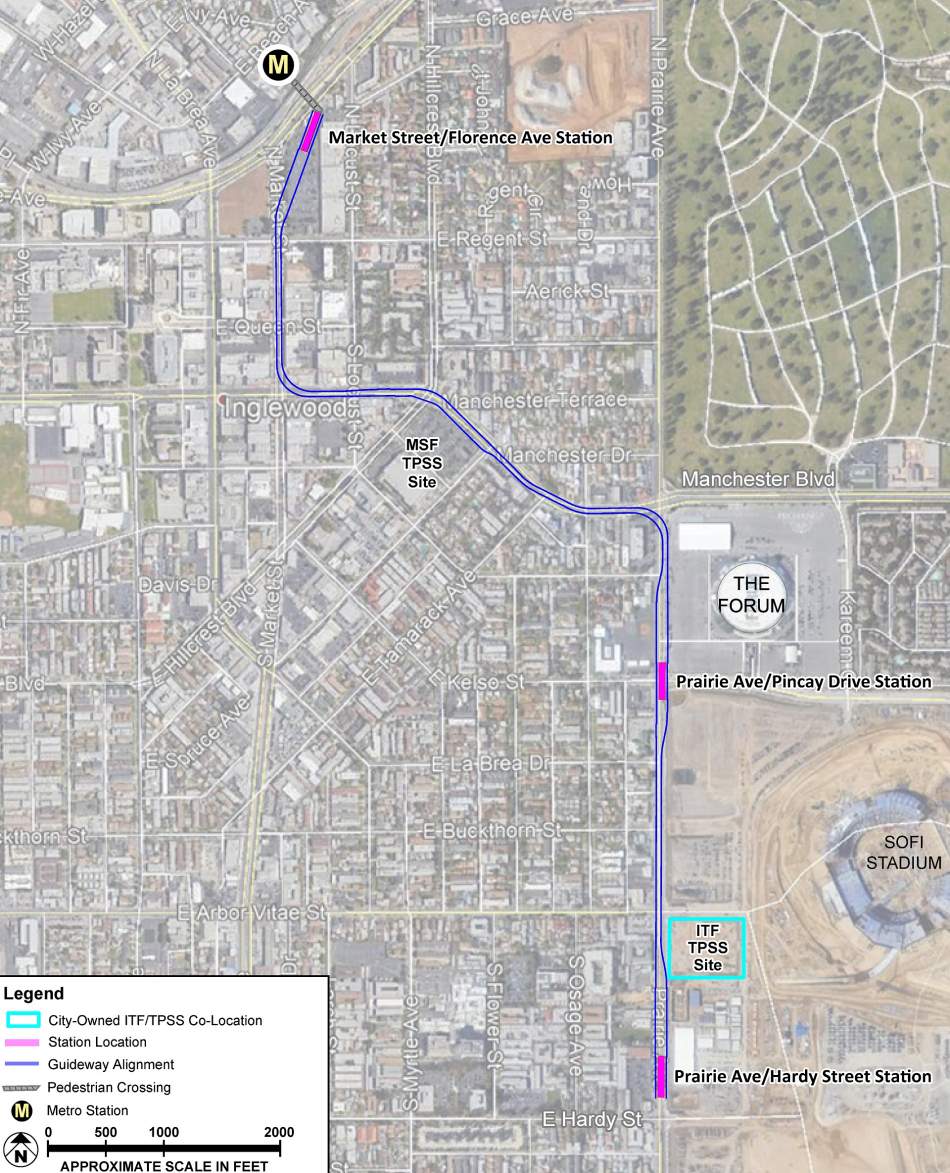A draft environmental study published by the City of Inglewood reveals new details for a proposed automated people mover system intended to connect the Crenshaw/LAX Line with the Forum, SoFi Stadium, and a proposed basketball arena for the Los Angeles Clippers.
The monorail-like system, which was announced in 2018, would originate from a proposed northern terminus across the street from the Downtown Inglewood Metro station. From there, trains would run on 1.6 miles of elevated guideway, snaking along Market Street, Manchester Boulevard, towards stations located at Prairie Avenue’s intersections with Pincay Drive and Hardy Avenue.
The project, in addition to connecting with a series of sports and entertainment venues, would also create a direct link between the Crenshaw/LAX Line and the budding commercial and residential district surrounding SoFi Stadium. The 300-acre district, which is also home to a new NFL Media campus, is approved for the construction of approximately 2,000 apartments, 800,000 square feet of office space, and 900,000 square feet of stores and restaurants.
Ridership projects contained within the environmental study suggest that roughly 3,100 passengers would make use of the people mover on an average weekday. That figure could swell to as much as 25,000 on days with events at any of the three venues along its southern leg.
Construction of the proposed project is expected to occur over a roughly 45-month period, with site preparation and demolition of existing structures slated to begin as early as late 2021. Heavy construction is anticipated to occur between 2022 and 2026.
In an interview, Inglewood Mayor James Butts – who is also a member of the Metro Board of Directors – described the project as a potential lynchpin for transit in the South Bay. Although the initial project is only slated to run within Inglewood city limits, a grant application submitted to the State of California suggests that the people mover could eventually be extended farther south to connect with Metro’s C Line in the median of the I-105 Freeway, while Butts has envisioned a future connection to the people mover system now under construction at Los Angeles International Airport.
Although the environmental study also considers the possibility of connecting the Crenshaw/LAX Line to the Forum, SoFi Stadium, and the Clippers arena through shuttle buses, Butts argues that the benefits of the Inglewood people mover justify its potential $1 billion price tag.
“Not everyone is comfortable with buses,” Butts tells Urbanize. “To get people outside of our typical demographic of rider, an overhead people mover that can transport 11,000 people per hour will give riders a reason and an incentive to see mass transit as more than an esoteric goal. It can be something that is useful and that will add to the experience of ridership.”
To date, Inglewood has cobbled together approximately $328 million in funding for the project through a combination of state grants and Metro highway money. Additionally, a portion of ticket sales tax revenue for the new Clippers arena will be earmarked for construction of the people mover. However, roughly two thirds of the total project budget remains unfunded, presenting a challenge to the project’s backers.
To close that gap, Inglewood officials have considered a variety of strategies. The grant application submitted to the State of California suggests that the city could pursue increases to business, hotel, and real estate transfer tax rates in order to create new funding streams for the people mover.
Additionally, allowing permitting development in conjunction with the Downtown Inglewood terminus - consisting of 600,000 square feet of housing, commercial uses, and parking – could offset some project costs.
The local and state money, as well as a changing of the political guard in Washington, have made Inglewood officials optimistic of the project’s prospects.
“We’re hopeful that the incoming [Biden] administration will recognize that this is a perfect project for infrastructure funding,” said Butts. “It brings together communities that will benefit economically, and a significant portion of funding is already in place.”
Partnering with a private sector entity that would build and operate the people mover could also ease the path for Inglewood. Private sector investors could ultimately contributed up to $300 million toward the project’s construction, according to Butts.
“I don’t want to say this is easily doable, because that sounds arrogant,” said Butts. “But it is logically consistent to say this is coming to fruition.”
- Inglewood Automated People Mover (Urbanize LA)









